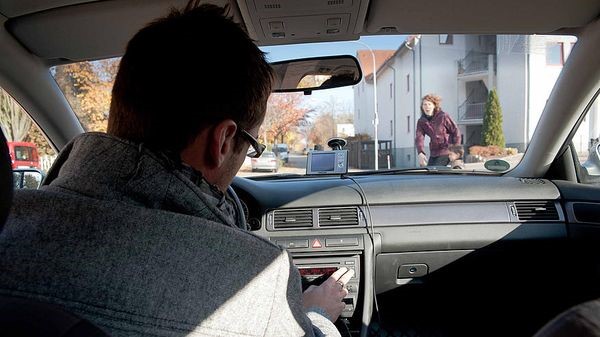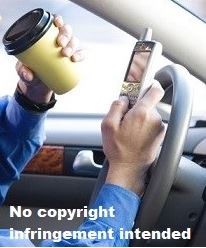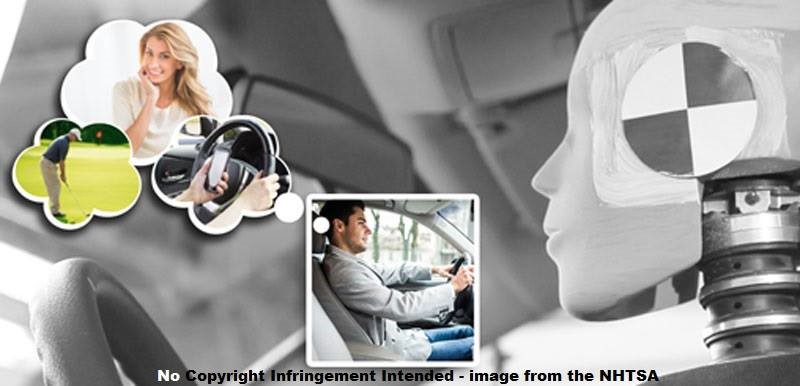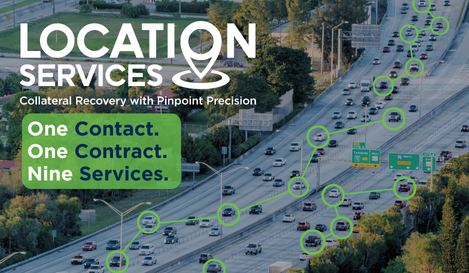
There are 3 main types of distracted driving: Visual, Manual & Cognitive. Recovery Specialist Insurance Group wants to help keep you safe on the roads, this month and all year long.
Visual Distractions – are those that make you take your eyes off the road.
One of the most common things we read in crash reports: “Driver states that he/she looked down for a second and did not realize OV (other vehicle) was slowing/stopping”
Think about all of the situations in your personal vehicles, tow trucks and camera cars that present an opportunity for visual distractions. Looking down at a cell phone, tablet or laptop, looking away to find something that has dropped or fallen, in personal vehicles, looking at your child/children/passengers, looking in the sun visor or rear view mirrors while grooming…
All it takes is a second and life as you know it could be over in an instant. We’re not just talking about death or injuries, but damage to vehicles and property, potentially becoming uninsurable and having to give up your business because you can’t find or afford insurance.

Manual Distractions are those where you move your hands from the wheel. Manual distractions include things like smoking in your vehicle, eating while driving, grooming while driving, holding a cell phone, changing the radio station, if controls are not on the steering wheel and reaching to wake up your computer or tablet.
From an actual 2015 collision report: “D1 stated he looked at his work computer and saw it had fallen asleep. He stated he looked down at the lap top and moved his finger [manual distraction] across the finger pad to “wake it up”.”
In this case, D1 claimed that he had a green light and that the other driver “ran the red” causing the collision. Driver 1’s own dash cam showed his traffic light was clearly in the top red position when he entered the intersection, colliding with Driver 2.
This incident ended up being a six figure – almost 7 figure – insurance company payout and cost the repossession company involved dearly. The simple act of moving his finger across the finger pad is a manual distraction. D1 in this case was found to be at fault.
Actions like this are things that most any driver on the road today can find themselves guilty of. We all think that we are capable of multi-tasking – of doing more than one thing at a time and to some degree we are; but we always need to remain vigilant and attentive when behind the wheel. It isn’t only our own lives we are dealing with when we are behind the wheel.
If you’re like most companies today and carrying $1 Million limits of liability as required by many of your contracts, every time you or an employee is behind the wheel, it is like giving them a million dollar blank check. We said it yesterday and will say it again…distracted driving is no joke! It is important that you have company training and policies that discuss distracted driving and have enforceable consequences if/when it occurs.
Perhaps the hardest to explain, manage and deal with, Cognitive Distractions are those that take your mind off of driving. The thing about cognitive distraction is that everyone, everywhere is almost always doing one thing while thinking about another.

As humans we believe we are extremely capable in terms of multi-tasking, and a lot of people can do more than one thing at a time…. We’ve all heard the comment “That person couldn’t walk and chew gum.”, when talking about someone who can’t do more than one simple thing at a time.
But with the stresses individuals feel on daily basis, can someone really avoid cognitive distractions? How far can you take this when dealing with distracted driving? The problem here is that when we talked about Visual and Manual distractions, the examples also involve Cognitive distraction as well.
In our first example from the crash report, the driver stated he looked away and didn’t realize that traffic had slowed in front of him. In our second example, the driver stated he looked down and moved his finger across the finger pad to wake up a lap top that had gone into sleep mode. In both these cases, the drivers’ minds were not on the road or driving process. Something in their minds made their attention go somewhere else.
Cognitive distractions are some of the most dangerous in my mind for this industry. You have cell phones, laptops, camera systems, driver fatigue, traffic & night driving and the stress, anxiety and for some adrenaline rush of nabbing that car – all of this plays with and weighs on your mind. Not to mention just the regular stress of your daily lives.
Only you can judge if you should be behind the wheel – if you’re in a good head space and can devote the level of attention required to operate in a safe manner and avoid risk. A good driver isn’t only necessarily the one who has never been in an accident; but is one who avoids putting themselves into the situation to be in or cause an accident.
April is Distract Driving Awareness month, we want to drive home the point that it is crucial that you have company training and policies that discuss distracted driving and have enforceable consequences if/when it occurs. (Just as import as having the policy is your willingness as an employer to enforce those policies – even when it is against your BEST driver that you think you can’t do without.)
For more information on distracted driving, visit our website www.rsig.com, find us on Facebook www.facebook.com/RSIGInsurance or register to attend REPO19 at www.repo19.com.












Facebook Comments